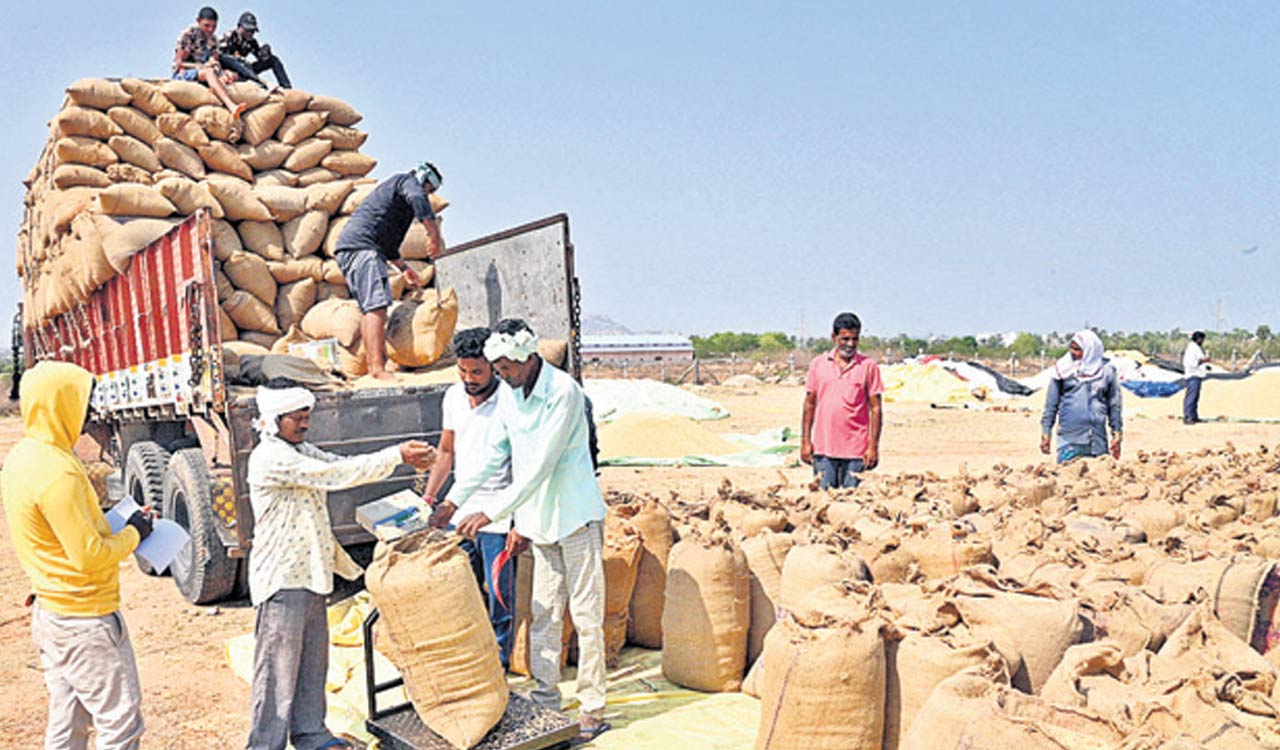Telangana: Market dynamics likely to nullify State incentive for paddy
The incentive is part of the government’s strategy to reduce dependency on fine rice procurement from other states. However, the current market dynamics pose significant challenges to the implementation of the scheme

Hyderabad: The complex market dynamics is likely to nullify the impact of the Rs.500 per quintal bonus sought to be extended by the State government to incentivise the production of paddy of finer varieties. This initiative, formalized through a government order issued on Tuesday, aims to support fine varieties, the production which is projected to be over 50 lakh metric tonnes and it may result in a financial implication of Rs 2500 crore on the exchequer per annum.
The incentive is part of the government’s strategy to reduce dependency on fine rice procurement from other states. However, the current market dynamics pose significant challenges to the implementation of the scheme. The success of the initiative will depend on the government’s ability to address the challenges. Despite the government’s promise to extend the incentive to all rice varieties as part of its election commitments, the final decision was to limit the bonus to fine grades. The recent relaxation of export curbs on rice is expected to result in increased demand in the open market, driving up prices.This situation makes it difficult for the government to compete with private traders and millers this year as they are out to offer higher prices than the government’s combined Minimum Support Price (MSP) and bonus.
Govt needs 36 lakh tonnes of fine rice
The MSP for A-grade paddy is Rs 2,203 per quintal, and even with the Rs 500 bonus, the total price remains lower than market rates. The State government needs to procure over 24 lakh metric tonnes of fine rice to meet the PDS needs. It has promised to distribute fine rice to 89 lakh ration card-holding families starting January 2025. Additionally, the overall requirement for fine rice under various government-sponsored initiatives, including mid-day meals, hostels, and the Rs 2 per kg rice scheme, is substantial, totalling over 36 lakh metric tonnes annually.The discrepancy between the government’s offered price and the market price is certain to make the farmers make their own choice. They will be more or less in favour of tilting towards the private traders. The government may need to procure fine rice at higher prices to meet its requirements, potentially straining its budget and affecting the implementation of the scheme.
Related News
-
Save future of Telangana NEET PG aspirants, IMA writes to CM Revanth Reddy
10 mins ago -
Telangana techie loses Rs 4.15 lakh to online gold trading fraud
40 mins ago -
Hyderabad: Couple working as house help at doctor’s residence held for theft
55 mins ago -
Hyderabad auto driver foils attempt to kidnap young woman, five held
2 hours ago -
Haiti gang attack on journalists covering hospital reopening leaves 2 dead, several wounded
3 hours ago -
21 dead as Mozambique erupts in violence after election court ruling
3 hours ago -
Cartoon Today on December 25, 2024
11 hours ago -
Former Home Secretary Ajay Kumar Bhalla appointed Manipur Governor, Kerala Governor shifted to Bihar
12 hours ago




